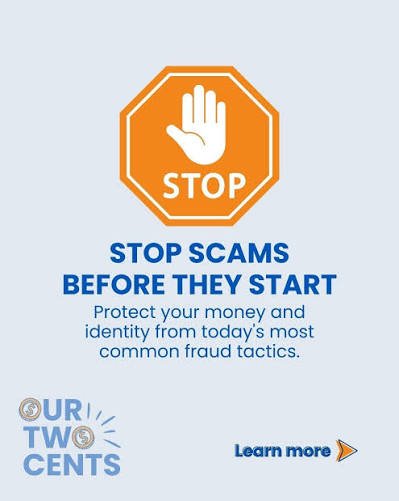Stop Scams Before They Start: Protect Your Money and Accounts
Your money will be safe if you stay alert, follow a few smart rules, and treat your bank account like a high-security vault.
Scams are becoming smarter and more convincing every month a fake link, a “SIM upgrade,” or an urgent OTP request can compromise your entire financial life. The solution: Slow down, verify the source, and lock down your devices.
Common Scams You Should Know
1. Phishing, Vishing & Smishing:
Scammers pose as banks through emails, SMS, or calls urging immediate action. Typical messages include: “Your account will be blocked.” “Click here to verify your OTP.” These contain fake links or numbers that steal credentials. New variant: “Digital Arrest” scam scammers claim you’re under police investigation and must pay fines.
2. eSIM / Mobile Number Swap Fraud:
Fraudsters activate a new SIM/eSIM linked to your number without your knowledge. They then intercept SMSs and OTPs, gaining access to your bank and payment apps.
3. Money-Mule Accounts / Synthetic Identities:
Criminals open bank accounts using fake or stolen identities. These accounts are used to launder illicit funds. If your name or details are misused, your account could be flagged or frozen.
4. Unauthorised Transfers or “Push” Payment Scams:
Victims are tricked into making payments themselves, thinking they’re paying for a refund, prize, or job offer. This type of fraud is called Authorised Push Payment (APP) fraud.
What You Should Do to Protect Your Accounts
1. Use Strong Access Controls: Enable multi-factor authentication (MFA) wherever possible. Use biometric logins (fingerprint/face ID) or separate PINs in addition to passwords.
2. Never Share Sensitive Information: Legitimate institutions never ask for: Passwords PINs CVVs OTPs Full login details If someone requests these, it’s always a scam.
3. Be Cautious with Links and Attachments: Avoid clicking on unknown links or attachments claiming urgency. Instead, visit your bank’s official app or website directly.
4. Monitor Your Accounts Regularly: Check: Account balances Transaction history Login activity If anything looks suspicious, contact your bank immediately. Early reporting helps prevent further loss.
5. Secure Your Mobile Devices: Keep your phone’s software and apps updated. Use strong passwords or biometric locks. Avoid installing apps from unverified sources. Be cautious on public Wi-Fi networks. Watch for SIM or eSIM change alerts.
6. Question “Too Good to Be True” Offers: Be skeptical of: “Guaranteed high returns” “Urgent investment opportunities” “Prize or refund claims” Scammers use urgency and greed to trick victims.
7. Know How to Report Frauds: If you suspect fraud or unauthorised activity: Contact your bank’s fraud helpline or branch immediately. In India, report via: National Cyber Crime Reporting Portal: cybercrime.gov.in Toll-free number: 1930 Prompt action increases chances of recovery.
Your financial safety depends on how carefully you guard access to your accounts. Treat your account like a vault. Every layer of protection counts. Stay alert, verify before acting, and report quickly if you sense danger. Once credentials or funds leave your control, damage is often fast and irreversible.

